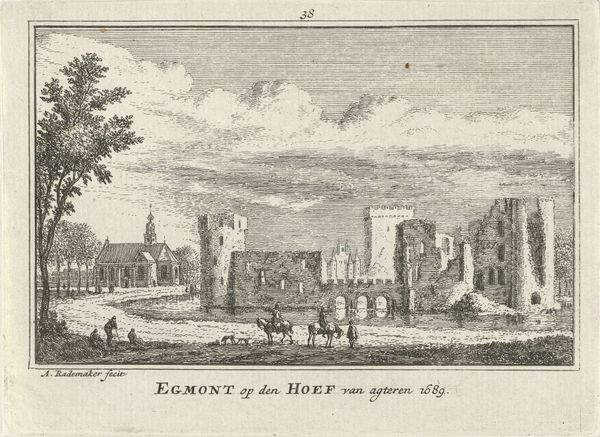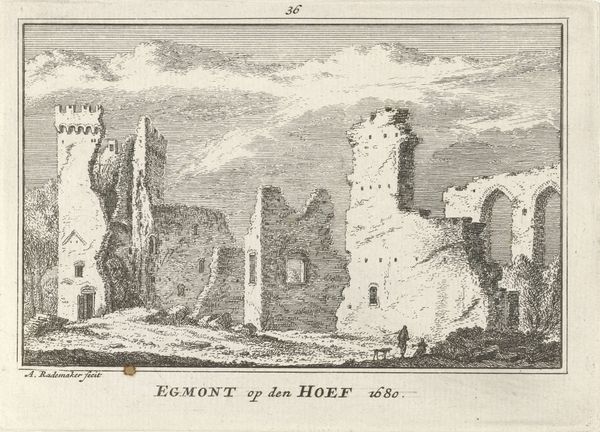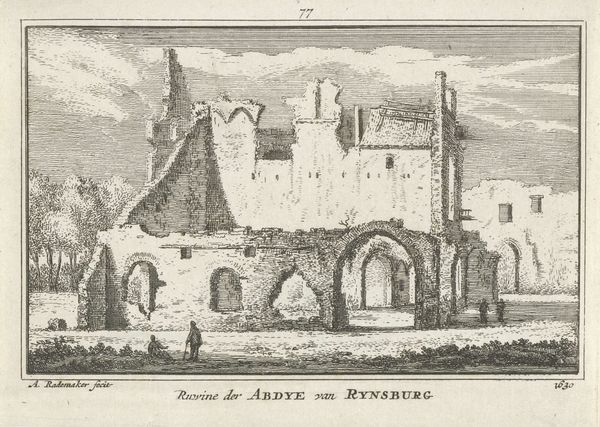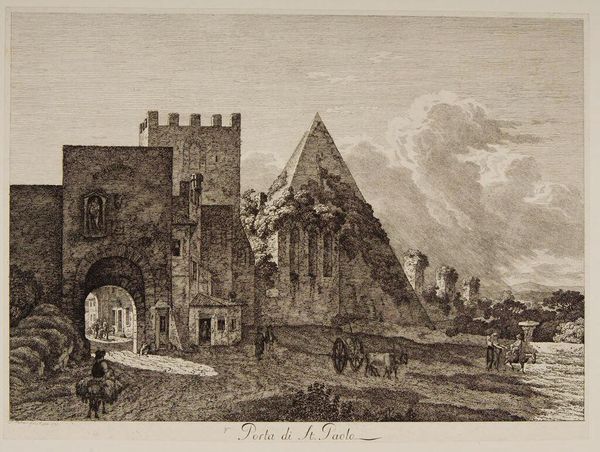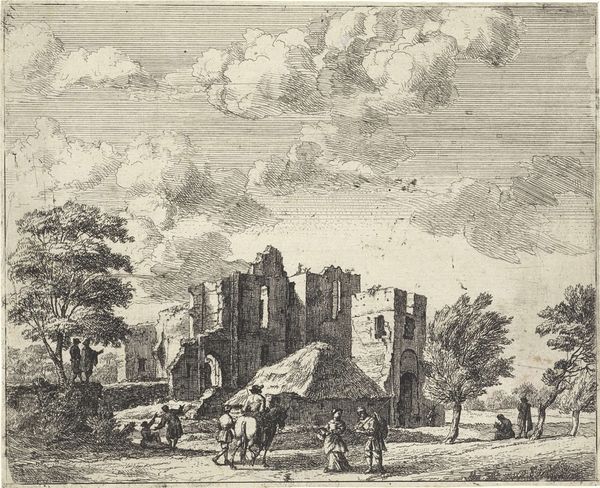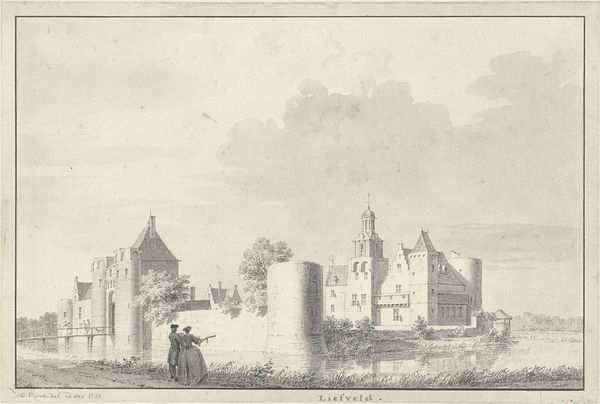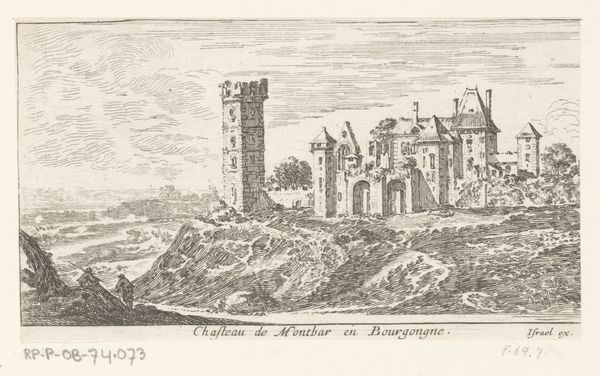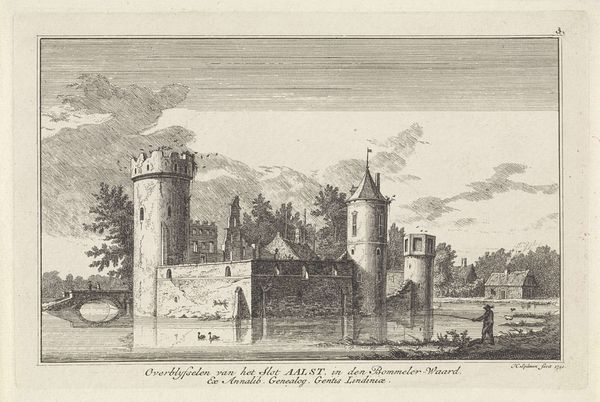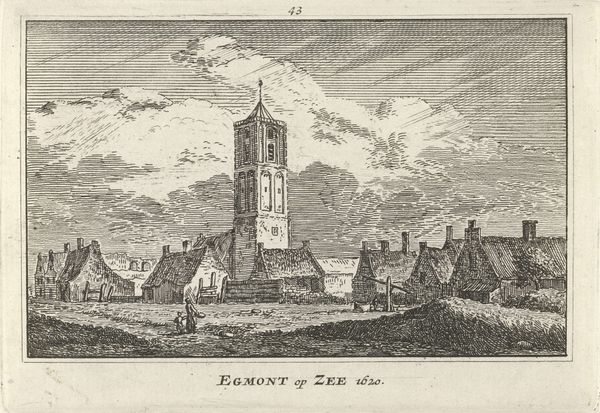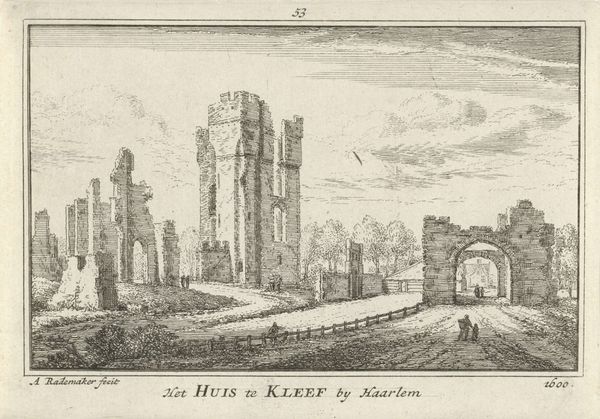
print, engraving, architecture
#
aged paper
#
baroque
#
dutch-golden-age
# print
#
old engraving style
#
landscape
#
house
#
engraving
#
architecture
Dimensions: height 80 mm, width 115 mm
Copyright: Rijks Museum: Open Domain
Curator: This delicate engraving, rendered in the style of the Dutch Golden Age, captures the "View of the Ruins of Egmond Castle" between 1727 and 1733 by Abraham Rademaker. Editor: It has such a melancholic beauty. The ruin dominates the scene, its delicate lines hinting at a grand, but decidedly faded, past. I can almost feel the weight of history in that aged paper. Curator: Absolutely. Rademaker's work is incredibly informative. As you observe the meticulous depiction of the castle ruins, remember that this artwork exists within a context where images of ruins symbolized a complex negotiation with the past and emerging Dutch identity. There was growing interest in the nation’s history. Editor: Right, and castles, even in ruin, always hold potent symbolism. This scene is not merely about physical decay; I perceive themes of transience, the passage of time, and perhaps even a reflection on the decline of nobility. Does that resonate within the socio-political climate of the period? Curator: It does. There's also a sense of control in Rademaker's landscapes. These engravings were circulated and consumed widely by the emerging middle class and, as the images were duplicated and disseminated, there was, simultaneously, a solidification of an imagined version of history. What Rademaker pictures contributes directly to shaping public sentiment. Editor: I’m intrigued by the three figures at the entrance of the castle. It feels symbolic; almost like ancestral spirits guarding what remains of their legacy. And is that a cross on the tower to the right? Or is the damage suggesting some type of spiritual attack, given the cross is damaged? Curator: That tower’s placement certainly could symbolize how Rademaker positioned the role of Catholicism amid emerging reformation movements. It’s a poignant meditation on religious and political transitions within the history of the Netherlands. What a potent scene of transformation! Editor: Indeed! There is much to explore when one excavates such artifacts as this beautiful rendering of temporality, belief and national identity. Curator: Thanks to the dissemination of printed imagery like these landscapes, we get such telling reflections on shifting powers within the early modern world.
Comments
No comments
Be the first to comment and join the conversation on the ultimate creative platform.
